How Swiss period rooms influenced American museums
Barbara Basting
3. January 2025
After it opened in 1898, the Swiss National Museum in Zurich and its period rooms served as an important model for museums in the United States.

Exhibition
Over two floors and around 2,000m2, the exhibition features more than 7,000 exhibits from the Swiss National Museum collection, highlighting Swiss artistry and craftsmanship dating from a period of around 1,000 years. The highlights of the tour include the 11th-century sacred palm donkey, the St. Gallen Globe (one of the largest surviving 16th-century globes), the spectacular Alice and Louis Koch ring collection, and the recently restored period rooms from all over Switzerland. The objects and rooms are part of Switzerland’s cultural and historical heritage and showcase the country’s cultural diversity and history.
Over a hundred years ago, jeweller Louis Koch (1862–1930) from Frankfurt and his wife Alice (1866–1937) collected rings from Antiquity, the Middle Ages, the Renaissance and the Baroque period up to the turn of the 20th century. Their descendants have extended the collection with rings from the 20th and 21st centuries. Featuring pieces by jewellery designers from Europe, America and Asia, it is one of the most extensive ring collections in the world. The whole collection is presented in a ring-shaped display case at the National Museum Zurich.
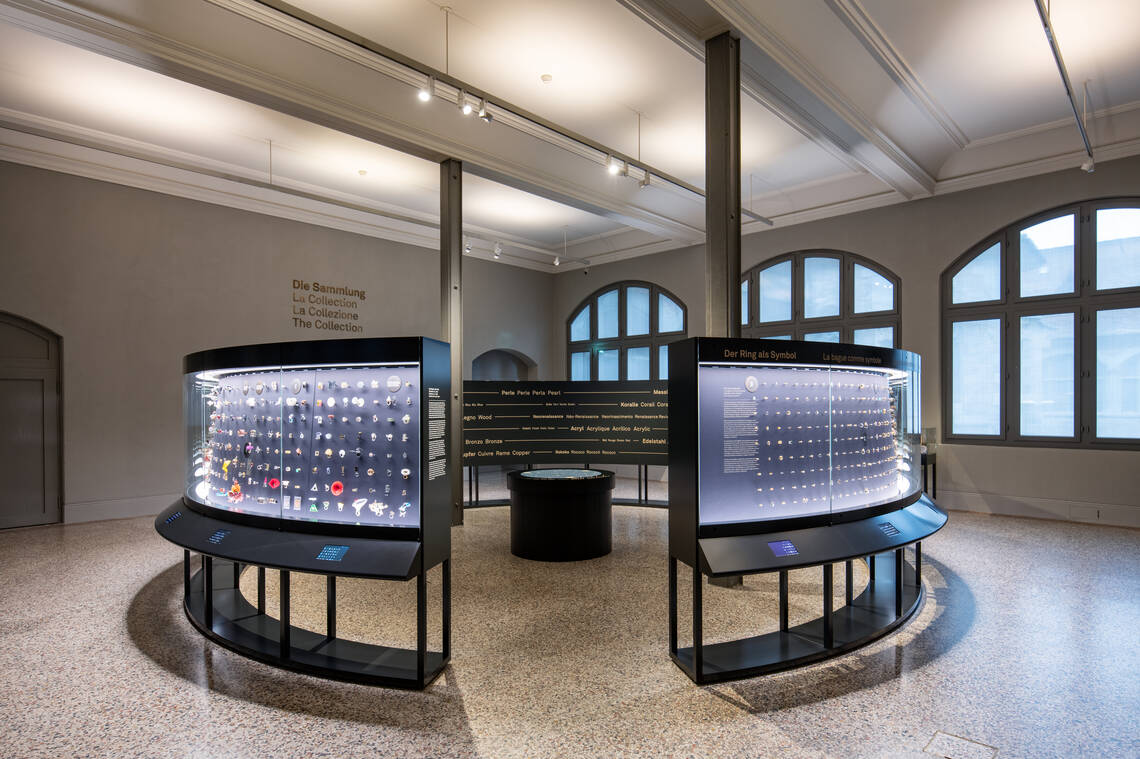
The Hallwil collection, a major gift to the National Museum Zurich, comprises sumptuous artworks, furniture, paintings and everyday objects from various periods. It was amassed by the Hallwyl family and reflects the lives and culture of the nobility. The collection enhances the museum with unique glimpses into the history of homes and collections in Switzerland. The display is a museum within a museum and brings to life how the pieces were exhibited 100 years ago.
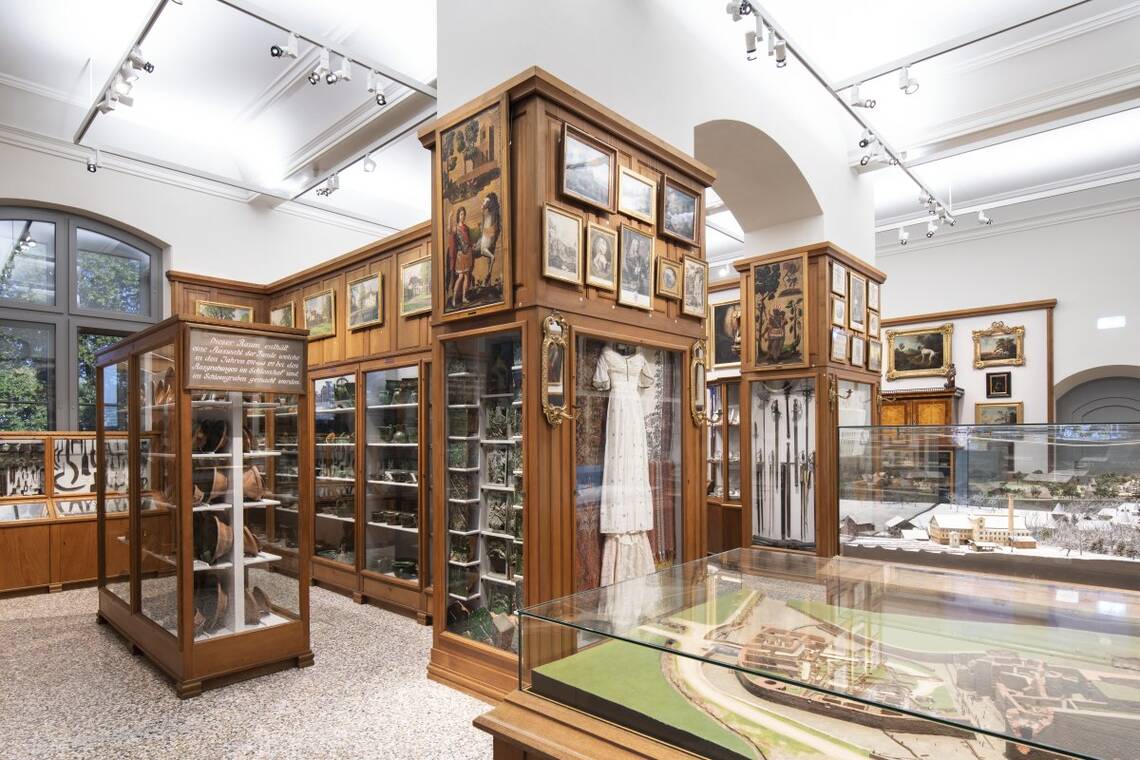
The period rooms at the National Museum Zurich present public and private room displays from the late Gothic to Baroque periods. The rooms come from different regions of Switzerland and have been carefully reconstructed with original wood panelling, furniture and objects. The result is a unique insight into the way people lived in centuries past.

The National museum Zurich offers a variety of events and guided tours.
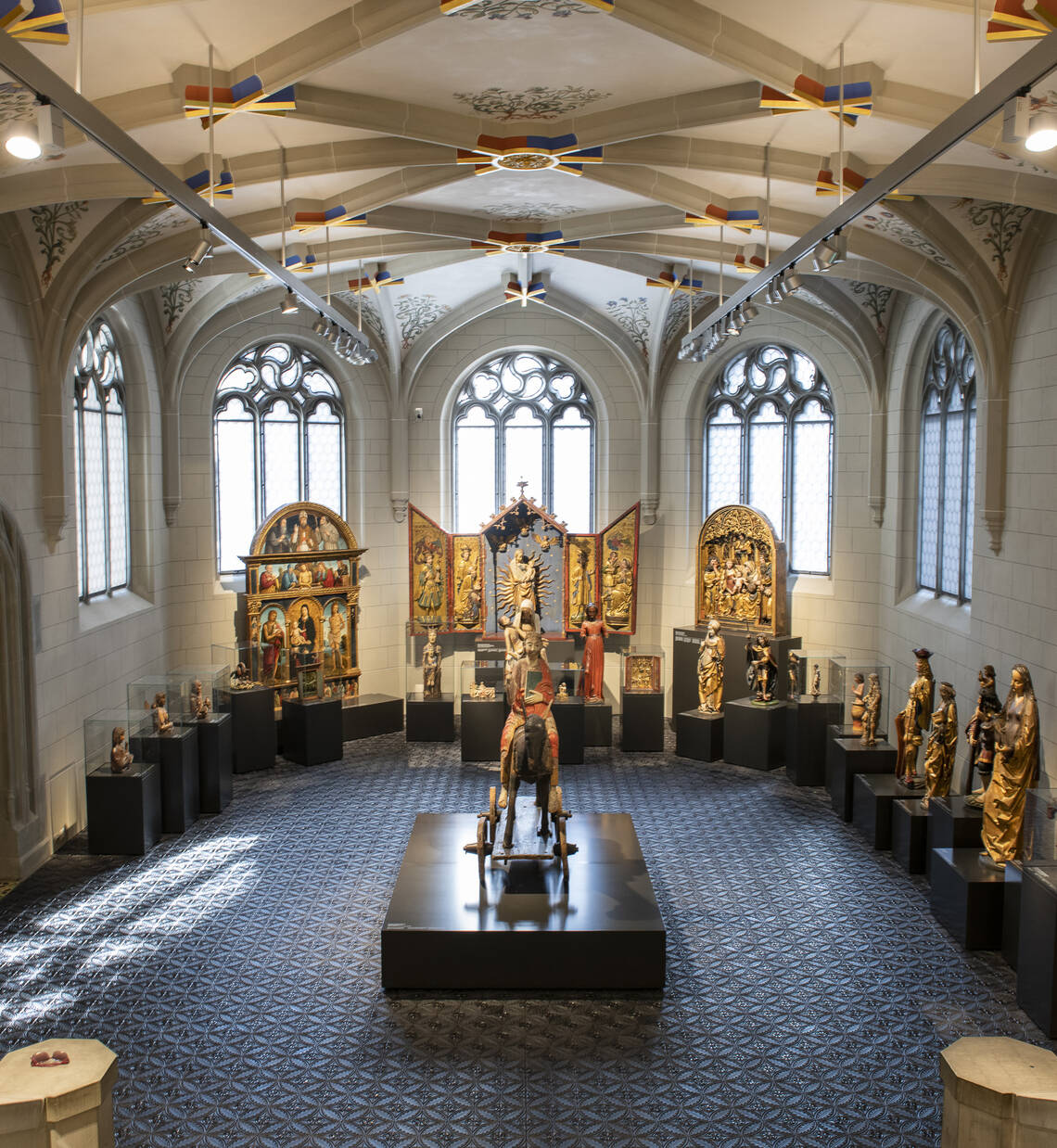
On this tour, important objects from the collection engage in dialogue with the recently renovated historical rooms, enabling history to be experienced at first hand. What did the apartments of the last abbess of Fraumünster abbey look like? How were the front rooms known as Stuben furnished in days gone by? The dense array of historical objects allows participants to immerse themselves in the past.
Tour: 1 hour
Guided tours can be arranged outside opening hours: Mon between 9.30 am and 6 pm, Tue to Fri between 9.30 am and 7.45 pm. Sat and Sun between 10 am and 5 pm
| Registration: |
2 weeks in advance |
|
|
Duration: |
60 minutes; special packages can be offered on request |
|
|
Group size: |
max. 25 participants per tour |
|
|
Languages: |
English, German, Italian, French. Other offers upon request. |
|
|
Cost: |
CHF 180 for the guided tour + CHF 10 admission per person Children up to 16 years free. For groups of persons with permit N, S, F, the guided tour and admission are free of charge. |
Monday till Friday 09:00 - 12:30
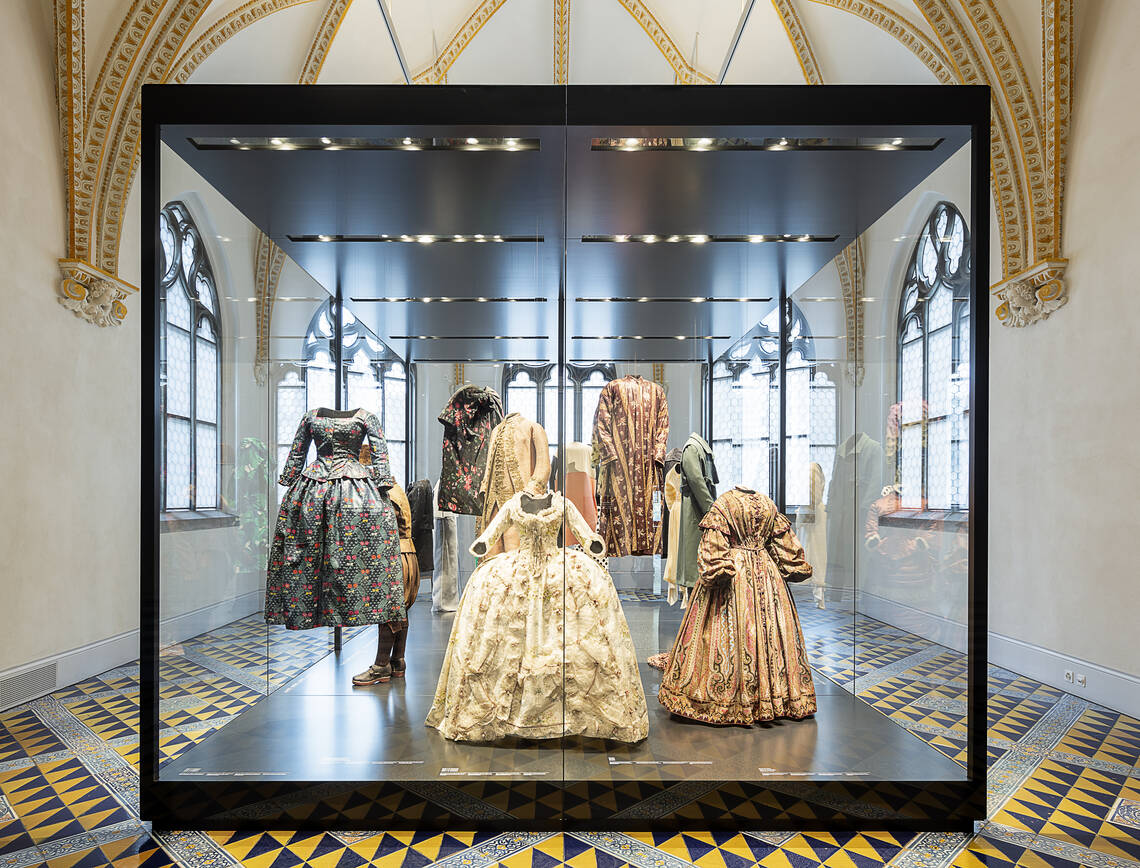
Clothing is an expression of personality or social status. Additionally, it is always a reflection of the times. How have fashions changed in the course of the centuries? What can the clothing of bygone days tell us? The tour allows participants to discover the history of fashion and the way clothing has changed over the centuries.
Tour: 1 hour
Guided tours can be arranged outside opening hours: Mon between 9.30 am and 6 pm, Tue to Fri between 9.30 am and 7.45 pm. Sat and Sun between 10 am and 5 pm
| Registration: |
2 weeks in advance |
|
|
Duration: |
60 minutes; special packages can be offered on request |
|
|
Group size: |
max. 25 participants per tour |
|
|
Languages: |
English, German, Italian, French. Other offers upon request. |
|
|
Cost: |
CHF 180 for the guided tour + CHF 10 admission per person Children up to 16 years free. For groups of persons with permit N, S, F, the guided tour and admission are free of charge. |
Monday till Friday 09:00 - 12:30
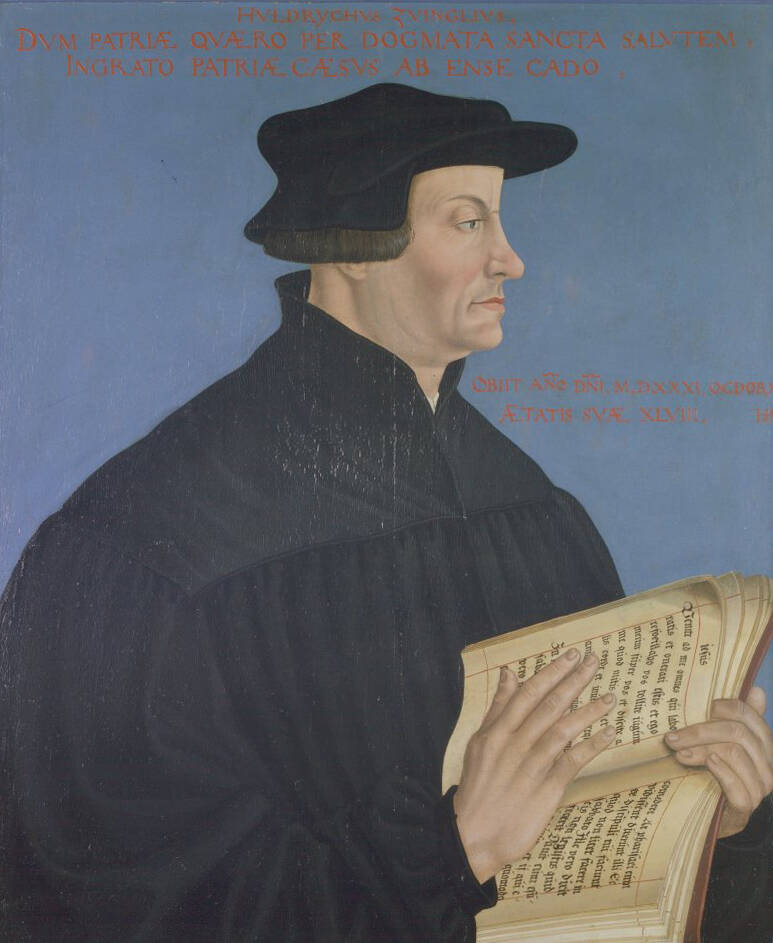
The Reformation changed the course of European history. What began as criticism of the Roman Catholic Church developed into a significant movement for religious reform. What caused the schism in which the Reformed Church split off from the Catholic Church? How did the Reformation influence society and politics? The tour sheds light on the far-reaching changes brought about by the Reformation.
Tour: 1 hour
Guided tours can be arranged outside opening hours: Mon between 9.30 am and 6 pm, Tue to Fri between 9.30 am and 7.45 pm. Sat and Sun between 10 am and 5 pm
| Registration: |
2 weeks in advance |
|
|
Duration: |
60 minutes; special packages can be offered on request |
|
|
Group size: |
max. 25 participants per tour |
|
|
Languages: |
English, German, Italian, French. Other offers upon request. |
|
|
Cost: |
CHF 180 for the guided tour + CHF 10 admission per person Children up to 16 years free. For groups of persons with permit N, S, F, the guided tour and admission are free of charge. |
Monday till Friday 09:00 - 12:30

With the free ‘Landesmuseum’ app, you can listen to the audio guides to the exhibitions on your own Smartphone. An innovative guide navigates you through the museum. The app is available in German, French, English, Italian, Romansh and Mandarin.
The renovation of the West Wing of the National Museum Zurich is now complete. This wing of the building has been restored to its 1898 condition and equipped with state-of-the-art technology. The result is a chamber of treasures that brings together the best objects from every era.
The renovation of the historically unique West Wing was also a return to the origins of the National Museum. Designed by Gustav Gull and opened in 1898, the building was constructed at the height of the historicist period. During this particular epoch, architecture combined a range of different historical styles, while also creating new elements and adding them to the overall appearance. This diversity of styles made the renovation of the building extremely challenging.
In close cooperation with the cantonal department responsible for the preservation of historic monuments, it has been possible to restore large parts of the West Wing to their original 1898 condition. However, this required not only an in-depth consideration of the building’s architecture, which is based on different eras from one room to the next, but also a re-examination of the way in which the Museum’s exhibits are presented. Presentation played a critical role in the Museum’s construction, more than 120 years ago: at that time, space and object were considered as a single entity. Gustav Gull more or less built the exhibition spaces around the exhibits on show, creating a historically dense ambience which facilitated access to the past and brought history to life.
However, the result is not a mere homage to the past; rather, very much in line with the historicist style, it is a return to historical vigour. These strengths have been complemented with the latest technology. Architects Christ & Gantenbein reconstructed original floors and adapted them to modern-day requirements, uncovered lightwells, and opened windows that had been bricked up over the past few decades. They also revealed long-forgotten paintings, bringing them back to the light of day. The result is a beautifully crafted chamber of Switzerland’s treasures that will delight both museum lovers and architecture enthusiasts.
The Swiss National Museum would like to thank for the generous support.



Overall management
Andreas Spillmann
Project management
Luca Tori
Exhibition curators
Luca Tori, Heidi Amrein, Jacqueline Perifanakis
Curators of the collections
Jürg Burlet, Beatriz Chadour, Andrea Franzen, Erika Hebeisen, Christian Hörack, Joya Indermühle, Christine Keller Lüthi, Mylène Ruoss, Bernard A. Schüle, Christina Sonderegger, Ricabeth Steiger
Scientific collaboration
Heidi Brunner, Stefan Egli, Nora Rudolf
Scenography
ATELIER BRÜCKNER GmbH: Uwe R. Brückner, Carmen Utz, Tanja Zöllner, Christin Erdmann
Project management Scenography
ATELIER BRÜCKNER GmbH: Carmen Utz
Graphics
ATELIER BRÜCKNER GmbH: Jana Fröhlich, Evelyn Prochota, Sarah Mager
Lighting design
Atelier Derrer: Rolf Derrer
Lighting
Marc Hägeli; Atelier Derrer: Rolf Derrer
Graphic key Visual
Roli Hofer
Media installations
René Vogel, Thomas Bucher; ATELIER BRÜCKNER GmbH: Tanja Zöllner; medienprojekt P2: Matthias De Ponte; 2av GmbH: Michael Barth, Johannes Friedrich, Martin Schmitt, Katrin Jedon, Surya Wöhrle, Jens Döring
Education and mediation
Stefanie Bittmann, Lisa Engi, Maria Iseli, Severin Marty
Public relations and marketing
Andrej Abplanalp, Alexander Rechsteiner, Carole Neuenschwander, Sebastiano Mereu, Anna-Britta Maag
Technical management
Walter Milan, Mike Zaugg, Gianina Flepp, Henrike Binder
Exhibition construction
Barth, Innenausbau KG, d. Ivo Barth GmbH: Thomas Ziegler, Ivo Barth; Sehner GmbH: Andreas Aupperle, Jürgen Sehner
Conservation and restoration management period rooms
Gaby Petrak
Conservation and restoration period rooms
Geißler & Lewandrowski Restaurierung; Restaurierungsatelier Kaufmann; Atelier Magener; Restaurierung Michel Räber GmbH; Schnetzler Wohngestaltung
Conservation management exhibits
Markus Leuthard, Elke Mürau, Tino Zagermann
Conservation and installation of objects
Nikki Calonder, Natalie Ellwanger, Etienne von Gunten, Andreas Hofmann, Isabel Keller, Elisabeth Kleine, Martin Ledergerber, Iona Leroy, Sarah Longrée, Uldis Mãkulis, Véronique Mathieu Lingenhel, Jürg Mathys, Leila Meister-El Ansari, Claudia Merfert, Françoise Michel, Elke Mürau, Caroline Muschel, Gaby Petrak, Ulrike Rothenhäusler, Nora Rudolf, Friederike Szlosze, Peter Wyer, Tino Zagermann
Object logistics and installation
David Blazquez, Simon D’Hollosy, Reto Hegetschweiler, Markus Scherer; Alder Stahl + Schweiss: Chrigel Alder, Christian Affentranger; Glasatelier Dold: Aline Dold; Fißler & Kollegen GmbH: Thomas Fißler, Bertram Haude, Franziska Hülsenberg, Daniel Klawitter
Advisory committee
Heidi Amrein, Ellen Bryner, Beat Högger, Markus Leuthard, Sabrina Médioni, Andreas Spillmann
Project controlling
Sabrina Médioni, Luigi Razzano, Ellen Bryner
Head of legal and contracts
Ursina Geissbühler, Jana Pfyl
Photography
Jonas Hänggi, Donat Stuppan
Photo archive
Andrea Kunz, Fabian Müller
Photographic rights
Barbara Davatz, Cristina Zilioli, Hélène Tobler, Francisco Paco Carrascosa
IT and Web
René Vogel, Stefan Hengstler, Daniel Niedermann, Pasquale Pollastro, Michael Ruckstuhl, Danilo Rüttimann
Translations
Veronica Barbacovi, Beatriz Chadour, Bill Gilonis, Laurence Neuffer, Nigel Stephenson, Marie-Christine Streuli
Editing and proofreading
Eva Carlevaro, Andrea Franzen, Joya Indermühle, Ingrid Kunz Graf, Laurence Neuffer, Jacqueline Perifanakis, Ilaria Piccolini, Catherine Schelbert, Daniela Schwab, Louise Stein, Nicole Wachter, Samuel van Willigen
We would like to thank the following companies for their support:
ATIDMA SCOP SARL; Isabelle de Bochegrave; Böhm Kabel AG; Eicher Werkstätten GmbH & Co. KG; Elektro Compagnoni AG; ERCO Lighting AG; GP Fiber Optics GmbH; IMModell; In Synergie GmbH; Kaba AG; Neonilluma AG; Poly-rapid AG; Richner AG; Samuel Rüegg Schreinerei GmbH; Securiton AG; Secusuisse AG; Touchewood Schreinerei